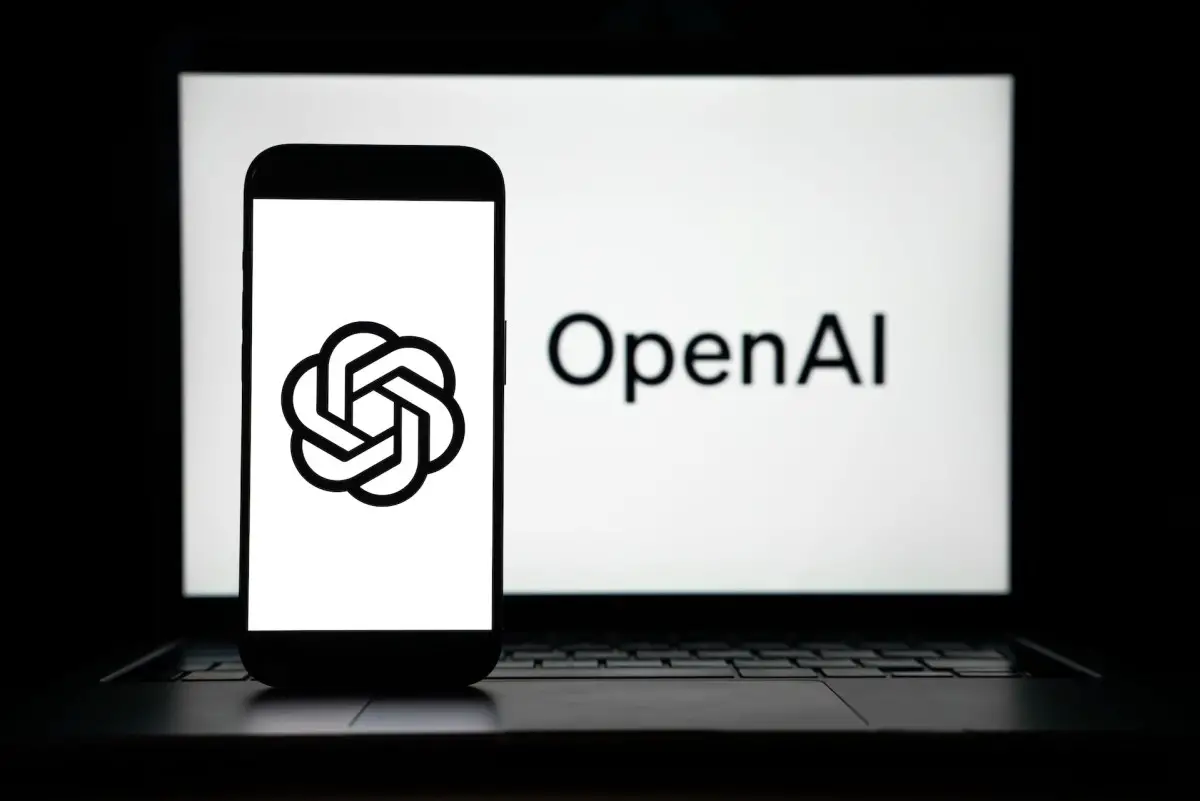Technology
How to use Instagram Map and protect your privacy

Following Wednesday’s launch of Instagram’s new Snap Map-like opt-in “Instagram Map” feature — which lets U.S. users share their most recent active location with others and discover location-based content — Instagram head Adam Mosseri is having to reassure people that their location is only visible to others if they decide to share it. Although Meta has made it clear that location sharing is off by default, there have been numerous posts on social media urging users to turn off location sharing, incorrectly claiming that it’s automatically turned on.
“We’re double checking everything, but so far it looks mostly like people are confused and assume that, because they can see themselves on the map when they open, other people can see them too,” Mosseri said in a Threads post. “We’re still checking everything though to make sure nobody shares location without explicitly deciding to do so, which, by the way, requires a double consent by design (we ask you to confirm after you say you want to share).”
Mosseri also said that some people are “confused” about how the feature works. For instance, people are accessing the feature and then seeing the map populated with the location information of some users. This is because the feature automatically pulls in location tags from recently posted Stories or Reels that include a tagged location.
It’s worth noting that this isn’t new, as Instagram already had location tags visible to users in its map view. However, the new Instagram Map feature makes this information a lot easier to access. The new feature might make you rethink whether you want to post your Stories and Reels with location tags (especially if you’re still at the location).
If you turn on your location on Instagram Map, your location only updates when you open the app or have it running in the background, meaning it doesn’t provide continuous, real-time location updates. This is different from Snap Map, which lets users choose whether their location is updated only when they open the app or in real time.
For those who want to ensure their location is turned off on Instagram Map, we’ll walk you through the steps below.
How to access Instagram Map

To access the new feature, you need to navigate to your DMs page (direct messages) and tap the new “Map” option at the top. If it’s your first time accessing the feature, you’ll likely see a pop-up message notifying you about the new Map.
The pop-up will tell you that no one can see your location until you share it with them, and that you can change your settings at any time.
How to set your location-sharing preferences

The first time you open Map, you will see a page that reads “Who can see your location.” From there, you can choose to share it with your Friends (followers you follow back), your Close Friends list, select users, or no one.
To change your preferences, you need to click on your profile, tap the settings option in the top-right corner, select the “Story, live and location” option, and then tap the “Location sharing” button. Here, you will be able to change your settings.
Note that if you have location sharing turned off, others can still share their location with you, which means you’ll be able to see them on the Map.
How to use Instagram Map
When you open the app, you will see the locations of friends who have shared their location with you. You will also see location-based Stories and Reels from people you follow.
For example, if your friend attended a nearby music festival and posted a story while there, it will appear on the map. Similarly, if a creator you follow posts a reel about a new restaurant in your city, you’ll be able to discover it on Instagram Map.
You will still see location-based content on the Map even if you have your location turned off.
You also can leave short, ephemeral messages, or “Notes,” on the map for others to see. Instagram Notes are the short messages that currently appear at the top of your direct messaging feed, but with the launch of Instagram Map, you will now see these posts on the map if they’re shared with a location.
This story was updated with new information.
You may like
Technology
Pintarnya raises $16.7M to power jobs and financial services in Indonesia

Pintarnya, an Indonesian employment platform that goes beyond job matching by offering financial services along with full-time and side-gig opportunities, said it has raised a $16.7 million Series A round.
The funding was led by Square Peg with participation from existing investors Vertex Venture Southeast Asia & India and East Ventures.
Ghirish Pokardas, Nelly Nurmalasari, and Henry Hendrawan founded Pintarnya in 2022 to tackle two of the biggest challenges Indonesians face daily: earning enough and borrowing responsibly.
“Traditionally, mass workers in Indonesia find jobs offline through job fairs or word of mouth, with employers buried in paper applications and candidates rarely hearing back. For borrowing, their options are often limited to family/friend or predatory lenders with harsh collection practices,” Henry Hendrawan, co-founder of Pintarnya, told TechCrunch. “We digitize job matching with AI to make hiring faster and we provide workers with safer, healthier lending options — designed around what they can reasonably afford, rather than pushing them deeper into debt.”
Around 59% of Indonesia’s 150 million workforce is employed in the informal sector, highlighting the difficulties these workers encounter in accessing formal financial services because they lack verifiable income and official employment documentation.
Pintarnya tackles this challenge by partnering with asset-backed lenders to offer secured loans, using collateral such as gold, electronics, or vehicles, Hendrawan added.
Since its seed funding in 2022, the platform currently serves over 10 million job seeker users and 40,000 employers nationwide. Its revenue has increased almost fivefold year-over-year and expects to reach break-even by the end of the year, Hendrawn noted. Pintarnya primarily serves users aged 21 to 40, most of whom have a high school education or a diploma below university level. The startup aims to focus on this underserved segment, given the large population of blue-collar and informal workers in Indonesia.
Techcrunch event
San Francisco
|
October 27-29, 2025
“Through the journey of building employment services, we discovered that our users needed more than just jobs — they needed access to financial services that traditional banks couldn’t provide,” said Hendrawan. “We digitize job matching with AI to make hiring faster and we provide workers with safer, healthier lending options — designed around what they can reasonably afford, rather than pushing them deeper into debt.”

While Indonesia already has job platforms like JobStreet, Kalibrr, and Glints, these primarily cater to white-collar roles, which represent only a small portion of the workforce, according to Hendrawan. Pintarnya’s platform is designed specifically for blue-collar workers, offering tailored experiences such as quick-apply options for walk-in interviews, affordable e-learning on relevant skills, in-app opportunities for supplemental income, and seamless connections to financial services like loans.
The same trend is evident in Indonesia’s fintech sector, which similarly caters to white-collar or upper-middle-class consumers. Conventional credit scoring models for loans, which rely on steady monthly income and bank account activity, often leave blue-collar workers overlooked by existing fintech providers, Hendrawan explained.
When asked about which fintech services are most in demand, Hendrawan mentioned, “Given their employment status, lending is the most in-demand financial service for Pintarnya’s users today. We are planning to ‘graduate’ them to micro-savings and investments down the road through innovative products with our partners.”
The new funding will enable Pintarnya to strengthen its platform technology and broaden its financial service offerings through strategic partnerships. With most Indonesian workers employed in blue-collar and informal sectors, the co-founders see substantial growth opportunities in the local market. Leveraging their extensive experience in managing businesses across Southeast Asia, they are also open to exploring regional expansion when the timing is right.
“Our vision is for Pintarnya to be the everyday companion that empowers Indonesians to not only make ends meet today, but also plan, grow, and upgrade their lives tomorrow … In five years, we see Pintarnya as the go-to super app for Indonesia’s workers, not just for earning income, but as a trusted partner throughout their life journey,” Hendrawan said. “We want to be the first stop when someone is looking for work, a place that helps them upgrade their skills, and a reliable guide as they make financial decisions.”
Technology
OpenAI warns against SPVs and other ‘unauthorized’ investments

In a new blog post, OpenAI warns against “unauthorized opportunities to gain exposure to OpenAI through a variety of means,” including special purpose vehicles, known as SPVs.
“We urge you to be careful if you are contacted by a firm that purports to have access to OpenAI, including through the sale of an SPV interest with exposure to OpenAI equity,” the company writes. The blog post acknowledges that “not every offer of OpenAI equity […] is problematic” but says firms may be “attempting to circumvent our transfer restrictions.”
“If so, the sale will not be recognized and carry no economic value to you,” OpenAI says.
Investors have increasingly used SPVs (which pool money for one-off investments) as a way to buy into hot AI startups, prompting other VCs to criticize them as a vehicle for “tourist chumps.”
Business Insider reports that OpenAI isn’t the only major AI company looking to crack down on SPVs, with Anthropic reportedly telling Menlo Ventures it must use its own capital, not an SPV, to invest in an upcoming round.
Technology
Meta partners with Midjourney on AI image and video models

Meta is partnering with Midjourney to license the startup’s AI image and video generation technology, Meta Chief AI Officer Alexandr Wang announced Friday in a post on Threads. Wang says Meta’s research teams will collaborate with Midjourney to bring its technology into future AI models and products.
“To ensure Meta is able to deliver the best possible products for people it will require taking an all-of-the-above approach,” Wang said. “This means world-class talent, ambitious compute roadmap, and working with the best players across the industry.”
The Midjourney partnership could help Meta develop products that compete with industry-leading AI image and video models, such as OpenAI’s Sora, Black Forest Lab’s Flux, and Google’s Veo. Last year, Meta rolled out its own AI image generation tool, Imagine, into several of its products, including Facebook, Instagram, and Messenger. Meta also has an AI video generation tool, Movie Gen, that allows users to create videos from prompts.
The licensing agreement with Midjourney marks Meta’s latest deal to get ahead in the AI race. Earlier this year, CEO Mark Zuckerberg went on a hiring spree for AI talent, offering some researchers compensation packages worth upwards of $100 million. The social media giant also invested $14 billion in Scale AI, and acquired the AI voice startup Play AI.
Meta has held talks with several other leading AI labs about other acquisitions, and Zuckerberg even spoke with Elon Musk about joining his $97 billion takeover bid of OpenAI (Meta ultimately did not join the offer, and OpenAI denied Musk’s bid).
While the terms of Meta’s deal with Midjourney remain unknown, the startup’s CEO, David Holz, said in a post on X that his company remains independent with no investors; Midjourney is one of the few leading AI model developers that has never taken on outside funding. At one point, Meta talked with Midjourney about acquiring the startup, according to Upstarts Media.
Midjourney was founded in 2022 and quickly became a leader in the AI image generation space for its realistic, unique style. By 2023, the startup was reportedly on pace to generate $200 million in revenue. The startup sells subscriptions starting at $10 per month. It offers pricier tiers, which offer more AI image generations, that cost as much as $120 per month. In June, the startup released its first AI video model, V1.
Techcrunch event
San Francisco
|
October 27-29, 2025
Meta’s partnership with Midjourney comes just two months after the startup was sued by Disney and Universal, alleging that it trained AI image models on copyrighted works. Several AI model developers — including Meta — face similar allegations from copyright holders, however, recent court cases pertaining to AI training data have sided with tech companies.
Got a sensitive tip or confidential documents? We’re reporting on the inner workings of the AI industry — from the companies shaping its future to the people impacted by their decisions. Reach out to Rebecca Bellan at [email protected] and Maxwell Zeff at [email protected]. For secure communication, you can contact us via Signal at @rebeccabellan.491 and @mzeff.88.
We’re always looking to evolve, and by providing some insight into your perspective and feedback into TechCrunch and our coverage and events, you can help us! Fill out this survey to let us know how we’re doing and get the chance to win a prize in return!
Partner with Intellectuals Insider
Advertising and contributor opportunities for brands and experts.
Latest


Is OctaFX Legit? Examining the Broker’s Global Standing
The world of modern finance has become one of the most dynamic and fast-growing environments. Today, technology, investment, and online...


Smarter Maintenance Management: How Digital Tools Are Transforming Preventive Maintenance and Facility Operations
In every modern industry — from manufacturing plants to amusement parks — equipment reliability defines performance. Unexpected downtime, inefficient scheduling,...


CisporaSeek: The Smarter Way to Search and Discover Information
We live in a time where there’s no shortage of information — but finding the right information can still feel...


Timur Turlov – Empowering Global Finance Through Innovation and Vision
In the world of modern finance, few entrepreneurs have captured global attention like Timur Turlov. As the founder and CEO...


Oprah’s Roomy Cargo Pants Are a Go-To Fall Style
Welcome to The Blueprint, where we break down the celebrity looks we want to wear right now and build them...


AI the New Tech Stack
[ad_1] The Internet Computer ICP$4.7751, a blockchain project that has sought to differentiate itself from rivals, is doubling down on...


How A Irrevocable Life Insurance Trust Can Reduce Estate Taxes
Lately, I’ve been thinking more about estate planning. Part of it is just getting older. Part of it is having...


Karlie Kloss welcomes third baby with husband Joshua Kushner
Karlie Kloss’ brood just got bigger. The model has given birth to her and husband Joshua Kushner’s third baby —...


Even Time-Strapped Business Owners Can Share an Engaging Reading Experience with Their Kids
Disclosure: Our goal is to feature products and services that we think you’ll find interesting and useful. If you purchase...


Russian Finance Minister: Ruble Is “Strong,” Enhances Budget Traceability
[ad_1] Anton Siluanov, Russia’s finance minister, said the digital ruble, Russia’s CBDC, is a “strong” and “reliable” alternative to the...


The End Of The Commercial Real Estate Recession Is Finally Here
Since 2022, commercial real estate (CRE) investors have been slogging through a rough downturn. Mortgage rates spiked as inflation ripped...


Prince Harry Made Secret Visit to Another Member of Royal Family During U.K. Trip
NEED TO KNOW Prince Harry’s four-day visit to the U.K. included a secret visit to another member of the royal...


White House offers more details about potential TikTok deal
[ad_1] White House Press Secretary Karoline Leavitt appeared on Fox News today and said that an agreement has been reached...


Matthew McConaughey reveals the bedroom secret that helped his marriage
Bigger isn’t always better. Matthew McConaughey revealed in his new book that downsizing his bed helped him get closer to...


Flora Growth Launches $401M Treasury to Back 0G AI Blockchain
[ad_1] Nasdaq-listed cannabis firm Flora Growth has launched a $401 million treasury initiative to back Zero Gravity (0G), a blockchain...


This Is a Rare Chance to Save More Than 70% on QuickBooks Desktop Pro Plus 2024
Disclosure: Our goal is to feature products and services that we think you’ll find interesting and useful. If you purchase...


Jordin Sparks Reveals If Son DJ, 7, Wants to Become a Singer
NEED TO KNOW Jordin Sparks attended the Elizabeth Taylor Night of Compassion at the Beverly Hills Hotel in California on...


The Upside of Grindcore Culture: Work Hard, Profit Harder
The grindcore culture is back and grindier than ever. At least that’s what Are Kharazian, an economist at fintech startup Ramp,...


Kalshi Outpaces Polymarket in Prediction Market Volume Amid Surge in U.S. Trading
[ad_1] Kalshi is pulling ahead in the prediction market race, capturing a dominant share of trading volume even as competitors...


Police kill carjacking suspect outside In-N-Out Burger in Laguna Hills
A man suspected of fatally shooting a woman outside an apartment complex in Carlsbad and stealing her SUV late Friday...
Nepal Uprising Is Latest Challenge to India’s Backyard Diplomacy
The overthrow of Nepal’s government is the latest in a series of uprisings among India’s neighbors, creating a political churn...


D4vd concert dates canceled as police investigate death of 15-year-old girl found in singer’s Tesla
The remaining dates for the d4vd Withered 2025 World Tour appear to have been canceled, as a Los Angeles police...


Fireworks show co-organized by Arc’teryx and artist Cai Guoqiang in Xizang’s Himalayas draws backlash over ecology and cultural disrespect
[ad_1] Cai Guoqiang stages a fireworks display in the Himalayas of Southwest China’s Xizang Autonomous Region on September 20, 2025....


Microbial Life Colonizes Post-Impact Craters And Thrives For Millions Of Years
78 million years ago, a 1.6 km asteroid slammed into what is now Finland, creating a crater 23 km (14...


Swiatek sweeps Saturday doubleheader; to face Alexandrova in Korea Open final
[ad_1] A rainout the previous day created a packed Saturday schedule at the Korea Open, with both the quarterfinals and...


‘We’re not North Korea.’ Newsom signs bills to limit immigration raids at schools and unmask federal agents
In response to the Trump administration’s aggressive immigration raids that have roiled Southern California, Gov. Gavin Newsom on Saturday signed...
I Look at This Country and I See a Stranger
This is one of those moments in history.


Why Hiring an Auto Accident Attorney in Charlotte, NC Can Improve Your Case
[ad_1] Life after a car accident can be overwhelming. Between medical care, car repairs, and figuring out what comes next,...


Sacramento ABC TV station building struck by gunfire, police say
A man has been arrested in connection with a shooting at a television station building in Sacramento faces a federal...


Thousands protest in Philippines over flood-control corruption scandal
[ad_1] MANILA, Philippines (AP) — Thousands of protesters took to the streets in the Philippine capital on Sunday to express...


Will We Ever Make it to Mars?
You know, if you take away the lack of air and water, the weaker Sun, the lower gravity, and the...


LAPD searching for suspect after stabbing on Metro bus in South L.A.
Los Angeles police are searching for a man suspected of stabbing and wounding another man during a confrontation aboard a...


Ellen DeGeneres says she was ‘kicked out of show business.’ Is it time to welcome her back?
[ad_1] Ellen DeGeneres People in entertainment LGBTQ issues TV shows See all topics Facebook Tweet Email Link The Cotswolds, England...


New video out from stage version of Prince’s ‘Purple Rain’
[ad_1] Rehearsals for the stage adaptation of Prince’s “Purple Rain” are in full swing and the lead performers have been...
They Helped Oust a Dictator. Now the New Regime Is Coming for Them.
President Daniel Ortega of Nicaragua and his wife, who is co-president, have been arresting longtime loyalists, in an apparent quest...


How Justin Timberlake and Jessica Biel Are Navigating ‘New Normal’
[ad_1] Jessica Biel has been by husband Justin Timberlake’s side amid his battle with Lyme disease. “Jessica has been extremely...


Where to watch South Carolina-Missouri game: time, SEC schedule
[ad_1] US LBM Coaches Poll: Georgia looks strong, Clemson drops out USA TODAY Sports’ Paul Myerberg breaks down Georgia’s comeback...


Canes Set for Showdown Against Rival Gators
[ad_1] Beck, of course, isn’t the only Hurricane eager to get on the field and face the Gators (1-2). Defensive...


National Cheeseburger Day 2025 deals at McDonald’s, Burger King, more
[ad_1] How to eat burgers without making a mess Keep your hands clean and your burger intact with this simple...


College football Week 4 preview – DJ Lagway, Arch Manning try to get right
[ad_1] Bill ConnellySep 19, 2025, 07:00 AM ET Close Bill Connelly is a writer for ESPN. He covers college football,...


Riot Fest Returns To Chicago This Weekend. Here’s What You Need To Know
[ad_1] DOUGLASS PARK — Riot Fest is back in Douglass Park this weekend for its 20th anniversary with Blink-182, Weezer...


Disney faces legal battle with Morgan & Morgan over Steamboat Willie
[ad_1] ORLANDO, Fla. (AP) — Is Steamboat Willie “For the people?” That’s a question that one of the largest personal...


Seminole County deputies shoot and kill child porn suspect
[ad_1] LONGWOOD, Fla. — Seminole County Sheriff Dennis Lemma says his deputies shot and killed a child porn suspect. What...
Access Denied
[ad_1] Access Denied You don’t have permission to access “http://www.espncricinfo.com/series/men-s-t20-asia-cup-2025-1496919/afghanistan-vs-sri-lanka-11th-match-group-b-1496930/ball-by-ball-commentary” on this server. Reference #18.4b5d1502.1758204766.23ff82f https://errors.edgesuite.net/18.4b5d1502.1758204766.23ff82f [ad_2] Source link


Garden City Based Car Crash Injury Lawyer at Bull Attorneys Now Expanding Legal Services to Topeka and Kansas City KS
[ad_1] Bull Attorneys, P.A. Expanding Legal Representation for Car Accident Victims Across Kansas Wichita, Kansas, Sept. 16, 2025 (GLOBE NEWSWIRE)...


West Nile virus death: Person dies related to mosquito bite in suburban Cook County, officials say
[ad_1] ByABC7 Chicago Digital Team Wednesday, September 17, 2025 5:01PM The Cook County Department of Public Health said this was...
USA knock Cuba out of Men’s Volleyball World Championship
[ad_1] Robinson emerged as the best scorer of the match with 14 points. He spiked 13 points at a 59%...


Gen V review – the male full-frontal really is gratuitous | Television
[ad_1] Two years after we last joined its troubled teens in their battle against the forces of corporate tyranny, superhero...


Red Sox vs. Athletics lineups and preview for September 16
[ad_1] The Athletics will again counter with Jeffrey Springs, who allowed five runs on eight hits en route to taking...


Death on the Riviera: The White Lotus is coming to France | The White Lotus
[ad_1] The White Lotus didn’t have the Emmys it expected this year, but a little thing like critical disappointment isn’t...


Silent Hill f Review Embargo Lifts A Few Days Ahead Of Release
[ad_1] 1 Details regarding the review embargo for Konami and NeoBards Entertainment‘s upcoming survival horror game, Silent Hill f, have...


2025 NFL Week 2 betting – Monday Night Football: Buccaneers-Texans and Chargers-Raiders
[ad_1] Sep 15, 2025, 09:55 AM ET The NFL’s Week 2 slate wraps up with a “Monday Night Football” doubleheader....


Trump administration launches pilot program for air taxis : NPR
[ad_1] An electric vertical takeoff and landing (eVTOL) aircraft, flies above the Joby eVTOL aircraft, during a demonstration of eVTOLs...


Redox-driven mineral and organic associations in Jezero Crater, Mars
[ad_1] Farley, K. A. et al. Mars 2020 mission overview. Space Sci. Rev. https://doi.org/10.1007/s11214-020-00762-y (2020). Farley, K. A. et al....


Football Improves to 3-0 With Win Over Langston
[ad_1] RIO GRANDE VALLEY – The University of Texas Rio Grande Valley (UTRGV) Vaqueros football team won...


Marlon Wayans ‘lost 20 lbs’ for ‘Scary Movie 6,’ teases ‘equal opportunity offenders’ (exclusive)
[ad_1] Marlon Wayans explains why he slimmed down to play Shorty in Scary Movie 6. The comedian and Him star...


Terence Crawford shooting details: The story of boxer’s 2008 near-death experience that ‘changed my life’
[ad_1] Terence Crawford shooting details: The story of boxer’s 2008 near-death experience that ‘changed my life’ originally appeared on The...


Old MEAC Foe on Deck for Cats Football
[ad_1] Story Links ORANGEBURG, SC. – For the third straight week to open the season,...


Mizzou-Louisiana football game time changed | Mizzou Xtra
[ad_1] COLUMBIA — The kickoff time for Saturday’s Mizzou football game against Louisiana has been moved to noon due to...


MLB Power Rankings Week 24: Every team’s standing in mid-September
[ad_1] Sep 11, 2025, 07:00 AM ET Almost halfway through September, the 2025 playoff picture is taking shape — but...


Eric Trump Uses Charlie Kirk’s Death to Sell His Book
[ad_1] Eric Trump has pushed his memoir into the Charlie Kirk conversation by vowing to donate a “portion” of new...


Sarah Jessica Parker, Jonathan Groff Host Broadway Luncheon
[ad_1] Sarah Jessica Parker and Tony Award winner Jonathan Groff hosted a luncheon gala on Monday to celebrate 25 years...


Mariners Next Star? MLB Insider Shares Praise For Top Prospect
[ad_1] The Seattle Mariners have been one of the more intriguing teams to follow this season. They’re loaded with talent,...


WWE Hall of Famer Suffers Stroke
[ad_1] Scouted selects products independently. If you purchase something from our posts, we may earn a small commission. The way...


10-year Treasury yield falls to 4% then snaps back as traders assess inflation data
[ad_1] The 10-year U.S. Treasury yield fell to 4% Thursday, then snapped back as investors assessed the latest inflation data,...


‘What’s Going On Here’: X Users Ask If Trump’s Video After Charlie Kirk Shooting Is AI-Made | World News
[ad_1] Last Updated:September 11, 2025, 10:57 IST As the claims of AI-generated content surfaced, AI-focused WhatsApp groups lit up with...


Fox News star Jesse Watters’ wife Emma announces tragic family loss – Celebrity News – Entertainment
[ad_1] The Watters family has endured devastating heartbreak over recent days. Friday night saw Emma, 32, who wed Fox News...


Man of Tomorrow Movie Set as Superman Followup for 2027
[ad_1] James Gunn has unveiled the next project in his Superman Saga. Man of Tomorrow will be in theaters July...
Pixel 10 loses ‘Daily Hub’ preview, Google working to improve
[ad_1] On the Pixel 10, Daily Hub brings together your calendar, Magic Cue, and other suggestions. Google is now pausing...


We Just Got New Updates on Kingdom Hearts 4 and FF7 Remake Part 3
[ad_1] I’m still playing Final Fantasy 7 Rebirth (this backlog is insane), and I’m loving my time with it. While...


Israel carries out attack against Hamas leadership in Qatar, Israeli source says
[ad_1] Facebook Tweet Email Link Israel carried out an attack against the Hamas leadership in Doha, an Israeli source told...


‘SmartLess’ Coming to the Hollywood Bowl for Fall Podcast Taping
[ad_1] “SmartLess” is coming to the Hollywood Bowl this fall for what is certain to be one of the most...


Who has qualified for World Cup 2026? Full list of teams
[ad_1] Clint Dempsey predicts which guys will start for Pochettino in 2026 Former USMNT player Clint Dempsey on Coach Pochettino’s...


Kelly Ripa, Mark Consuelos Have Black Bathroom with Matching Toilet Paper (Exclusive)
[ad_1] NEED TO KNOW Kelly Ripa and Mark Consuelos revealed in an exclusive interview with PEOPLE that they have a...


La Casa de los Famosos México en vivo: Facundo es el sexto eliminado del reality show
[ad_1] Facundo revela quiénes son sus favoritos para ganar Después de convertirse en el sexto eliminado, Facundo se presentó en...


Valkyries first WNBA expansion team to reach playoffs in inaugural season
[ad_1] SAN FRANCISCO — The Golden State Valkyries made history Thursday night as they became the first WNBA expansion franchise...


Why Ferrari didn’t use Hamilton to help Leclerc
[ad_1] Ferrari has explained why it decided against using Lewis Hamilton to try to tow team-mate Charles Leclerc to pole...


TIFF 2025: Cillian Murphy’s Steve is a dour, dark delight
[ad_1] The first actor to ever win two consecutive Oscars didn’t exactly break the mould to do so. Spencer Tracy...


Emma Raducanu: British number one withdraws from Billie Jean King Cup
[ad_1] British number one Emma Raducanu has withdrawn from the Great Britain team for this month’s Billie Jean King Cup...


Latest news for Browns rookie
[ad_1] $30 billion expected to be legally wagered on 2025 NFL season Americans are expected to wager an estimated $30...
Luke Fahey outshines Ryder Lyons, Mission Viejo routs Folsom
[ad_1] Ohio State commit Luke Fahey throws for 326 yards on 21 of 31 passes with five touchdowns to lead...


Breaking Down the Mustangs Ahead of Week 2
[ad_1] The Baylor Bears are coming off a disappointing loss to the Auburn Tigers to start the 2025 season. Unfortunately...


Stock market today: Live updates
[ad_1] Traders work on the floor at the New York Stock Exchange (NYSE) in New York City, U.S., September 3,...


The interstellar comet 3I/ATLAS is wrapped in carbon dioxide fog, NASA space telescope reveals
[ad_1] On July 1, 2025, the Deep Random Survey remote telescope in Chile, part of the ATLAS (Asteroid Terrestrial-impact Last...


BL4 nails the Borderlands basics, and that’s all that matters
[ad_1] Many things come to my mind when I think of Borderlands. The fascinating gun design. The weird yet charismatic...


Kelly Ripa, Mark Consuelos’ Son Joaquin Twins with Dad in Vacation Photos
[ad_1] NEED TO KNOW Kelly Ripa and Mark Consuelos spent some quality time with their children The Live with Kelly...


Spike Lee’s ‘Highest 2 Lowest’ $17 million penthouse
[ad_1] In Spike Lee’s highly anticipated film “Highest 2 Lowest,” Denzel Washington plays hip-hop mogul David King, who resides in...


GSA deputy Stephen Ehikian to ‘transition out’ of current role
[ad_1] A top official at the General Services Administration since the start of the Trump administration is stepping down from...


Derek Hough Records Heartwarming Gift For His Baby on the Way
[ad_1] Derek Hough is so ready to be a dad — and has already created a touching gift for the...


Jinkx Monsoon on Oh, Mary! and Riding a Wave of Representation on Broadway
[ad_1] Jinkx Monsoon, currently playing Mary Todd Lincoln in the uproarious comedy Oh, Mary!, is thrilled to be part of what...


Warren Buffett Sells Apple Stock and Buys a Restaurant Stock Up 4,270% Since 2005
[ad_1] Warren Buffett’s Berkshire Hathaway has sold more than two-thirds of its stake in Apple since Q3 2023, while building...


Ranking the best NHL players and prospects under 23: Celebrini, Bedard top the list
[ad_1] Welcome to this year’s edition of the under-23 NHL player rankings. After ranking every organization’s best young players in the NHL Pipeline...


Jamie Lee Curtis Slams Princess Diana’s ‘Sham Contract Of A Marriage’ To King Charles On 28th Death Anniversary
[ad_1] Jamie Lee Curtis is reflecting on the “mindful” and “loving life” that Princess Diana lived before her tragic passing. ...
How does Christian Yelich’s 2025 season rank among his best of all time
[ad_1] --> At age 33, Christian Yelich is arguably on pace to have the third best season of his career,...


The Force Isn’t Strong With Star Wars Outlaws On Switch 2, Initial Impressions Suggest
[ad_1] Watch on YouTube Subscribe to Nintendo Life on YouTube833k We are mere days away from the Switch 2’s next...


Throwback To ICONIC Dance Battle That Made Birthday Girl Zendaya (And Tom Holland) Stars | Hollywood
[ad_1] ICONIC Dance Battle That Made Birthday Girl Zendaya (And Tom Holland) Stars Long before Zendaya became a two-time Emmy-winning...


Marcus Freeman – Had to ‘trust my gut’ on CJ Carr QB decision
[ad_1] Adam RittenbergAug 26, 2025, 01:47 PM ET Close College football reporter; joined ESPN in 2008. Graduate of Northwestern University....


John Fogerty Says It’s “Hilarious” Trump Still Misses the Irony of Playing “Fortunate Son” at His Rallies
[ad_1] The post John Fogerty Says It’s “Hilarious” Trump Still Misses the Irony of Playing “Fortunate Son” at His Rallies...


I loved this brilliantly gory thriller so much I watched it twice – catch it before it leaves Netflix soon
[ad_1] When you buy through links on our articles, Future and its syndication partners may earn a commission. Credit: Lionsgate...


Cody Campbell Asks Congress to Allow National College Sports TV Deal
[ad_1] Cody Campbell Asks Congress to Allow National College Sports TV Deal Privacy Manager [ad_2] Source link
Entertainment


Norman Reedus’ son makes alarming threat after arrest for assault
Norman Reedus and supermodel Helena Christensen’s troubled son, Mingus Reedus, asked a startling question one day after he was arrested...


Where Is Paula Deen Now? Inside the Celebrity Chef’s Life After Food Network
NEED TO KNOW It has been over a decade since Paula Deen’s Food Network show came to an end in...


Sydney Sweeney’s ‘Americana’ co-star Halsey slams fans who boycotted film over ‘denim bulls–t’
Sydney Sweeney’s “Americana” co-star Halsey slammed fans who are boycotting their film due to the former’s American Eagle controversy. “you...


Milla Jovovich Gushes Over Paul W.S. Anderson in 16th Wedding Anniversary Tribute
NEED TO KNOW Milla Jovovich and her husband, Paul W.S. Anderson, are celebrating 16 years of marriage with a series...


Ozzy Osbourne ‘knew’ he was dying during final Black Sabbath show
When a “frail” Ozzy Osbourne took the stage for his final Black Sabbath show, he knew the end was coming....


See Photos of Pierce Brosnan, Colin Farrell, Margot Robbie, Anne Hathaway and More
Stars have been everywhere this week, from Pierce Brosnan looking as dapper as ever in London to Margot Robbie and...


Meghan Markle sending ‘intentional’ message to royals with calculated move on Season 2 of Netflix show
Meghan Markle is allegedly sending an “intentional” message to the royals with her fashion choices for Season 2 of her...


Jillian Michaels Slams ‘Egregious’ Claims in ‘The Biggest Loser’ Documentary
NEED TO KNOW Jillian Michaels is denying claims made against her in Netflix’s docuseries Fit for TV: The Reality of...


Joan Collins, 92, defies age in chic white swimsuit on vacation
Age is just a number. Joan Collins flaunted her “timeless beauty” in a chic white swimsuit as she shared a...


See Photos of Kaitlyn Dever, Pedro Pascal, Cynthia Erivo and More
Stars have been everywhere this week. Kaitlyn Dever and Pedro Pascal attend the HBO Max Emmy Nominee Celebration in Hollywood,...


Livvy Dunne talks to Page Six about being a Taylor Swift fan
Gymnast and social media star Livvy Dunne is a certified Swiftie. Dunne, who is dating Pirates All-Star pitcher Paul Skenes,...


Bella Thorne Reacts After Fans Criticized Her for Proposing to Fiancé Mark Emms
NEED TO KNOW Bella Thorne responded after fans criticized her for proposing to her fiancé, Mark Emms, two years after...


Kate Middleton and Prince William’s new home forces 2 families to ‘move out’: report
Kate Middleton and Prince William’s new family mansion reportedly forced two families to move out of their nearby homes. The...


Seth Green Teases a DuJour Reunion from ‘Josie and the Pussycats’
NEED TO KNOW In an interview, Seth Green recently said he would be open to a DuJour reunion DuJour is...


Courtney Stodden takes new swipe at Chrissy Teigen four years after cyberbullying scandal
Courtney Stodden claims she sent a friendly message to Chrissy Teigen, but she’s being “completely ignored” four years after their...


Mila Kunis Says She Barely Ate During Prep for ‘Black Swan’ Role
NEED TO KNOW Mila Kunis is recounting her intense preparation for her role as a professional ballerina in Black Swan...


Gal Gadot says ‘pressure’ to speak out against Israel caused ‘Snow White’ movie to flop
Gal Gadot revealed she believes the “pressure” placed on celebrities to speak against Israel played a role in her Disney...


Peacemaker’s Jennifer Holland on Work-Life Balance in Marriage to Creator James Gunn (Exclusive)
NEED TO KNOW Peacemaker actress Jennifer Holland opens up about the work-life balance in her relationship with series creator James...


Pierce Brosnan reveals the secret behind his great head of hair and aging well
Pierce Brosnan may be unlocking the secret to why Irish men seem to possess enviable mops of hair. “I don’t...


Viola Davis Shares Photos from Her 60th Birthday Celebration Vacation
NEED TO KNOW Viola Davis celebrated her 60th birthday in Cabo San Lucas, Mexico The Oscar-winning actress marked the milestone...


Kate Gosselin snubs estranged son Collin, says her kids ‘all get along’ and have ‘wonderful’ bond
Kate Gosselin gushed over how well her children “get along” after her estranged son, Collin, penned an emotional open letter,...


Johnny Knoxville, 54, Shows Off Buff Arms While Hitting the Speed Bag
NEED TO KNOW Johnny Knoxville showed off his skills — and some serious biceps — on the speed bag in a...


Quinn XCII answers questions about his new album ‘LOOK! I’m Alive’ in Confession Cube
Quinn XCII answers questions about his new album ‘LOOK! I’m Alive’ in Confession Cube Next Previous


Katie Holmes Wore a Flannel with Trousers, Shop the Look
Welcome to The Blueprint, where we break down the celebrity looks we want to wear right now and build them...


Dua Lipa flaunts her abs during paddleboard yoga in Ibiza
Dua Lipa is showing off her impressive abs and athletic ability in Ibiza. The singer, 29, was snapped doing yoga...


Does Kim Cattrall Return as Samantha?
Warning: This story contains spoilers for the And Just Like That… series finale. NEED TO KNOW Fans have been wondering...


Olivia Jade Giannulli is the spitting image of mom Lori Loughlin in first sighting since Jacob Elordi split
Like mother, like daughter. Olivia Jade Giannulli looked like her mom Lori Loughlin’s twin in her first sighting since her...


How Prince William, Prince Harry Impact Diana’s Causes 28 Years After Her Death
NEED TO KNOW Prince William and Prince Harry are separately backing causes that Princess Diana championed during her life Tessy...


Taylor Swift details emotional moment that left her and Travis Kelce ‘weeping’
Travis Kelce comforted Taylor Swift as she fought back tears while discussing the dramatic moment she found out she would...


Taylor Swift Reflects on Taking Care of Her Dad After His Heart Surgery
NEED TO KNOW Taylor Swift opened up about her dad Scott Swift’s major quintuple bypass surgery Swift revealed she moved...


Taylor Swift’s new album ‘Life of a Showgirl’: Everything to know
Taylor Swift sent shockwaves through her fandom by announcing her 12th studio album during her debut appearance on boyfriend Travis...


Luke Bryan Slams ‘Idiots’ Throwing Objects at Musicians During Concerts
NEED TO KNOW Luke Bryan has some words for “idiots” who throw objects at musicians during shows In July, the...


Taylor Swift gets cozy with Travis Kelce and teases ‘male sports fans’ in ‘New Heights’ preview
Taylor Swift gets cozy with Travis Kelce and teases ‘male sports fans’ in ‘New Heights’ preview Next Previous


Naomi Watts Wore Wide-Leg Jeans Like These Pairs from Amazon
Celebrities have been reaching for roomy, breezy pants all summer long — and it doesn’t look like the comfortable trend...


Blake Lively takes swipe at Justin Baldoni’s lawyer over alleged ‘smear campaign’ in deposition transcript
Blake Lively took a swipe at Justin Baldoni’s lawyer, Bryan Freedman, during her July 31 deposition, accusing him of being...


Jessica Alba Wore a Cardigan and Trousers, Get the Look
Welcome to The Blueprint, where we break down the celebrity looks we want to wear right now and build them...


Dua Lipa celebrates 30th birthday in sequin dress with a butt cutout
Dua Lipa celebrated her 30th birthday early in a custom white dress with a butt cutout. Instagram/dualipa Bootylicious. Though Dua...


Taylor Swift Announces New Album The Life of a Showgirl with Help from Travis and Jason Kelce
NEED TO KNOW Taylor Swift has revealed her next era will be The Life of a Showgirl The announcement came...


Taylor Swift announces new album ‘Life of a Showgirl’ on ‘New Heights’ podcast
Drop everything now! Taylor Swift announced she’s releasing new music during a surprise appearance on her boyfriend Travis Kelce’s “New...


Bethenny Frankel Admits She’s Currently ‘Afraid’ to Date
NEED TO KNOW Bethenny Frankel opened up about her dating life in a candid TikTok In the video, Frankel shares...


Lauren Sánchez marks a major parenting milestone as son Evan goes to college
Lauren Sánchez felt “proud,” but also “heartbroken,” as she dropped her son, Evan Whitesell, off at college. The former journalist...


Jennifer Aniston Makes Rare Comments About Her Divorce from Brad Pitt
NEED TO KNOW Jennifer Aniston gave some rare comments about her divorce from Brad Pitt in her newly published September...


Exes Joe Jonas and Demi Lovato reunite for ‘Camp Rock’ performance
The band is all here. Exes Joe Jonas and Demi Lovato stunned fans when they reunited for a “Camp Rock”...


Maluma Stops Concert to Scold Mom Who Brought Baby
NEED TO KNOW Maluma called out a fan for bringing a baby to his Mexico City concert “Do you think...


Kathy Griffin confirms third facelift after raising eyebrows with ‘very taut’ appearances
Kathy Griffin confirmed she underwent a third facelift after making headlines due to her recent public appearances. The 64-year-old comedian...


Singer Says He’ll ‘Never Play in Kansas City’
NEED TO KNOW Zach Bryan said he “will never play in Kansas City” while feuding with Kansas City Chiefs fans...


‘Doomsday prepper’ Josh Duhamel reveals ‘calling’ that made him leave LA for Minnesota
Livin’ life in the “Land of 10,000 Lakes.” “Doomsday prepper” Josh Duhamel revealed that he was inspired to leave Los...


Linda Hamilton Is ‘Uncomfortable’ with Praise, Being Told She’s an ‘Icon’ (Exclusive)
NEED TO KNOW Linda Hamilton sometimes ran into a starstruck response while on set for her new film Osiris, she...


Kate and Jon Gosselin’s son Collin pens message to estranged siblings
Kate and Jon Gosselin’s son Collin released an emotional open letter to his seven siblings. The “Jon & Kate Plus...


‘TMNT’ Co-Creator Reveals Which Actor Wants to Play Casey Jones (Exclusive)
NEED TO KNOW Teenage Mutant Ninja Turtles co-creator Kevin Eastman said that actor Joe Manganiello would like to play Casey...


‘DWTS’ alum Cheryl Burke reveals how she dropped 41 pounds
Cheryl Burke lost a significant amount of weight — while still enjoying the sweeter things in life. “At my heaviest...


Melissa McCarthy and Husband Ben Falcone Recreate ‘Ghost’ Pottery Scene
NEED TO KNOW Melissa McCarthy and husband Ben Falcone visited Wild Clay L.A. on Friday, Aug. 8 They shared a...


Katy Perry shows off brutally scraped knees she sustained during ‘Lifetimes’ tour
She’ll cry about it later. Katy Perry showed off her brutally scraped knees she sustained while dancing on her “Lifetimes”...


Lindsay Lohan Shares ‘Parent Trap’ Reunion Selfie with Elaine Hendrix
NEED TO KNOW Lindsay Lohan shared a new selfie with her Parent Trap costar Elaine Hendrix from behind-the-scenes of Freakier...


Kylie Jenner rocks tiny bikini top ahead of 28th birthday
Kylie Jenner is celebrating her last few days as a 28-year-old in a stylish little black bikini top. The makeup...


Anderson Cooper Shocks Fans with Unrecognizable Gray Facial Hair
NEED TO KNOW Anderson Cooper surprised fans with a new look in his latest Instagram update On Aug. 7, the...


‘Virtual Reali-Tea’ unpacks Tamra Judge’s break down over Teddi’s fall in New Orleans
‘RHOC’ recap: ‘Virtual Reali-Tea’ unpacks Tamra Judge’s break down over Teddi’s fall in New Orleans Next Previous


Heather and Tarek El Moussa’s Son Tristan, 2, Is Growing Up Fast in New Photos
NEED TO KNOW Heather and Tarek El Moussa’s 2-year-old son Tristan is preparing for preschool HGTV star Heather shared a...


Jack Nicholson’s grandson Sean arrested for domestic violence: report
Jack Nicholson’s grandson Sean was reportedly arrested on felony domestic violence charges in Los Angeles. Sean Knight Nicholson, 29, was...


‘The White Lotus’ Star Sam Nivola Addresses Nepo Baby Label
NEED TO KNOW Sam Nivola addressed the nepo baby label in a new interview and said his success is “sometimes...


Kelly Clarkson’s ex-husband, Brandon Blackstock, dead at 48 after cancer battle
Kelly Clarkson’s ex-husband, Brandon Blackstock, has reportedly died after battling cancer. He was 48. “It is with great sadness that...


Heidi Klum Teases Her ‘Extra Ugly’ and ‘Super Scary’ Halloween Costume
NEED TO KNOW During an appearance on The Tonight Show Starring Jimmy Fallon Wednesday, Aug. 6, Heidi Klum began teasing...


Kelly Clarkson abruptly cancels Las Vegas residency shows for the second time
Kelly Clarkson canceled her remaining Las Vegas residency dates in August. Getty Images for Live Nation Las Vegas Pop icon...


Jeff Bezos and Lauren Sánchez Bezos Hit the Dance Floor in Ibiza
NEED TO KNOW Jeff Bezos and Lauren Sánchez Bezos were spotted vacationing in Spain on their extended European honeymoon The...


Nordstrom has great deals on New Balance sneakers right now
Page Six may be compensated and/or receive an affiliate commission if you click or buy through our links. Featured pricing...


Melinda French Gates Remembers Serena Williams Hyping Her Up When She Thought Nothing Would Fit Her Body
NEED TO KNOW Melinda French Gates credited Serena Williams for boosting her body confidence when speaking with her during a...


Why Michelle Obama fought ‘first sparky feelings’ when she met ‘sexy’ Barack
Michelle Obama took “IMO” listeners down memory lane on Wednesday. The former first lady kicked off the podcast episode by...


Step by Step’s Angela Watson and Husband Share Updates on Baby James
NEED TO KNOW Angela Watson and her husband Brian Nahas share updates on their son James after welcoming the baby...


Shirtless Orlando Bloom shows off jacked body at the beach
Life’s a beach — and newly single Orlando Bloom is just playing in the sand. The shirtless actor flaunted his...


Woody Allen Compared Jeffrey Epstein to Dracula in Birthday Letter
NEED TO KNOW The New York Times reported a letter written by Woody Allen to Jeffrey Epstein in 2016 The...


Brad Pitt gets into character while filming in LA and more star snaps
Brad Pitt films in LA, Lin-Manuel Miranda meets his wax figure and more snaps…


All About Joely, Carlo and Natasha
Vanessa Redgrave is part of a British acting dynasty that spans more than five generations — and includes her three...


Christie Brinkley, 71, and daughter Sailor, 27, matched with the same men on dating app
Christie Brinkley and her look-alike youngest daughter, Sailor Brinkley Cook, attract the same men despite their 44-year age difference. The...


Justin Timberlake Jokes He’s ‘Not Doing S— Today’ After Tour Ends
NEED TO KNOW Justin Timberlake is “not doing s—” as he relaxes at home, following the end of his two-year...


Brandi Glanville names her facial parasite after her ‘Real Housewives’ nemesis
Brandi Glanville named her facial parasite “Caroline,” the same name as her “Real Housewives” nemesis, Caroline Manzo. The “Real Housewives...


Dylan Dreyer Marks ‘Surprise’ Birthday Party with Hoda Kotb and Kids
NEED TO KNOW Dylan Dreyer shared a glimpse at her “surprise” 44th birthday party to social media The Today meteorologist...


Mila Kunis and Ashton Kutcher show PDA at Backstreet Boys concert
They want it that way. Mila Kunis and Ashton Kutcher showed rare PDA while enjoying the Backstreet Boys’ larger-than-life “Into...


Erik Menendez Returns to Prison After Being Hospitalized, Undergoing Surgery
NEED TO KNOW Erik Menendez has returned to prison after being hospitalized to receive treatment for kidney stones Erik’s stepdaughter,...


Oasis ‘shocked’ after man falls to his death at London concert
Oasis has spoken out after a man fatally fell from the upper level at their Wembley Stadium show. “We are...


Elizabeth Holmes Works Out in Texas Prison amid 11-Year Fraud Sentence: Photos
NEED TO KNOW Elizabeth Holmes was photographed working out in prison on Aug. 2 The disgraced former tech CEO is...


Travis and Jason Kelce’s dad Ed’s girlfriend, Maureen Maguire, dead at 74
Ed Kelce’s girlfriend, Maureen Maguire, has died. She was 74. According to an obituary the father of NFL stars Travis...


Meryl Streep and Stanley Tucci Film ‘The Devil Wears Prada 2’ in N.Y.C.: Photos
NEED TO KNOW Meryl Streep and Stanley Tucci are on set for the filming of The Devil Wears Prada 2...


Eva Longoria rocks white bikini and sheer romper in Spain
Eva Longoria rocked a skimpy white bikini and a sheer romper during a family getaway in Marbella, Spain, this week....


Brooklyn Beckham and Nicola Peltz Renew Their Vows 3 Years After Wedding (Exclusive)
NEED TO KNOW Brooklyn and Nicola Peltz Beckham renewed their wedding vows on Saturday, Aug. 2 The vow renewal celebration...


Vanessa Hudgens, Jennifer Lopez, Nick Jonas and more
Star snaps of the week: Vanessa Hudgens, Jennifer Lopez, Nick Jonas and more Vanessa Hudgens pauses while on a babymoon...


‘They Have a Lot in Common’ (Exclusive)
NEED TO KNOW Justin Trudeau and Katy Perry sparked romance rumors in recent days by spending time together in Montréal...


Padma Lakshmi rocks hot pink string bikini in the Hamptons
Padma Lakshmi modeled a tiny hot pink string bikini after revealing a substantial change in her bra size. In the...


‘Naked Gun’ Director Limited Reboot to Only 1 O.J. Simpson Joke to Be ‘Respectful’
NEED TO KNOW Akiva Schaffer is directing the latest iteration of the popular police movie, The Naked Gun The comedy...


Justin Timberlake, Bella Hadid, more
Justin Timberlake recently revealed in a lengthy Instagram statement that he has been diagnosed with Lyme disease. Unfortunately, the pop...


Pregnant Wife of Former NBA Star Attacked by Shark
NEED TO KNOW Eleonora Boi opened up about getting bit by a shark in Puerto Rico on her Instagram The...


Kim Zolciak cops to spending daughters Ariana and Brielle’s money on ‘WWHL’
Kim Zolciak finally addressed spending her daughters’ money, one month after Ariana Biermann called her out. On Thursday’s episode of...


Jason Momoa Calls His Dad’s Cameo in ‘Chief of War’ a ‘Pretty Beautiful Moment’
NEED TO KNOW Jason Momoa’s dad plays a special role in his life and in his upcoming AppleTV+ series The...


Tyra Banks confesses ‘disgusting and erotic’ addiction
Tyra Banks knows how to pick ’em. The supermodel revealed her “disgusting and erotic” habit of popping pimples and picking...


Jesse Metcalfe Reveals How His Girlfriend Reacted to Ex Scheana Shay’s Book Detailing Their Past Romance (Exclusive)
NEED TO KNOW Jesse Metcalfe revealed how girlfriend Helene Immel reacted to Scheana Shay detailing their brief relationship in her...


Alix Earle shares update on her acne battle and current skincare routine
Page Six may be compensated and/or receive an affiliate commission if you click or buy through our links. Featured pricing...


See Photos of Jenna Ortega, Pamela Anderson, Liam Neeson and More
Stars have been everywhere this week. In London, Jenna Ortega is a vision of gothic beauty at the premiere of...


Adam Carolla claims ‘mean’ Ellen DeGeneres made staff ‘scared to death’
Comedian Adam Carolla claimed Ellen DeGeneres’ daytime talk show staff members were “scared to death” of her and “cowering” when...


Kelly Clarkson’s Sideboard Is 73% Off at Wayfair
Kelly Clarkson kicked off her Las Vegas residency on July 11, and we can’t help but fawn over her recording...


Stuart Weitzman shoes are on sale for up to 87% off at Nordstrom Rack
Page Six may be compensated and/or receive an affiliate commission if you click or buy through our links. Featured pricing...


All About Klay Thompson’s Parents, Mom Julie and Dad Mychal Thompson
NEED TO KNOW Klay Thompson was born to Mychal and Julie Thompson on Feb. 8, 1990 His mom, Julie, was...

